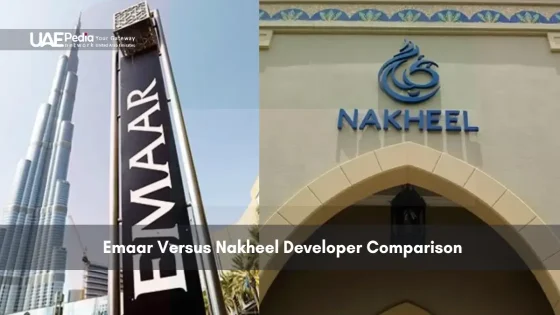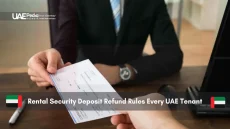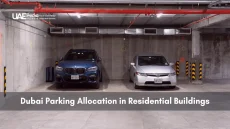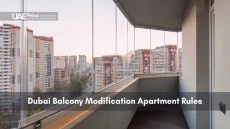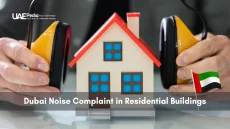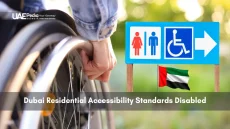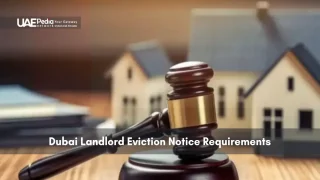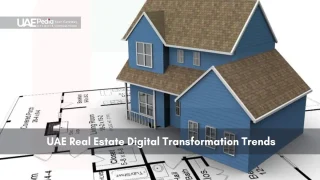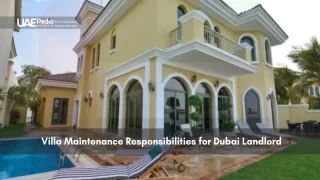Did you know 90% of Dubai’s population rents their homes? This glittering metropolis blends futuristic towers with traditional neighborhoods, creating a rental landscape as dynamic as its skyline. For those leasing property here, understanding exactly who handles repairs—air conditioning glitches, plumbing surprises, or wear-and-tear fixes—can feel like deciphering desert mirages.
Local regulations outline clear guidelines for upkeep duties between parties, but the details matter. We’ve combed through legal documents and tapped into insights from top agencies to simplify the essentials. Whether you’re renting a high-rise apartment or a villa with a private garden, clarity starts with knowing where your obligations begin and end.
This guide breaks down:
- How the city’s rapid growth shaped its unique leasing framework
- Critical distinctions between urgent fixes and cosmetic updates
- Pro tips for harmonious tenant-owner relationships
Understanding Dubai Rental Dynamics and the Maintenance Landscape
Imagine a city where 65% of residents move every 2 years—welcome to the world’s most transient rental hub. While skyscrapers shimmer under desert sun, the real magic happens in leasing offices and maintenance logs shaping this fast-paced market.
What Tenants Want Now
Recent data shows 78% of renters prioritize responsive repair services over flashy amenities. Properties with documented upkeep histories lease 22% faster, according to Betterhomes’ 2023 report. Quick fixes for AC systems and plumbing now rank higher than marble countertops in tenant surveys.
| Area | Avg. Occupancy | Top Tenant Request |
|---|---|---|
| Urban High-Rises | 92% | HVAC Maintenance |
| Suburban Villas | 88% | Garden Irrigation |
| Coastal Communities | 95% | Balcony Safety Checks |
Smart Care = Lasting Value
We’ve seen properties with scheduled maintenance plans retain 15% more value over five years. One Jumeirah complex increased renewal rates by 40% simply by conducting quarterly pipe inspections. As one property manager told us: “Tenants stay where they feel heard—not just housed.”
Seasonal deep cleans and prompt response to repair requests create trust. This approach turns temporary leases into long-term relationships—the true currency in competitive markets.
The Legal Framework Behind “dubai landlord maintenance responsibilities law”
Ever wonder what happens when a burst pipe meets a signed lease? Local regulations act like traffic lights for rental relationships—keeping everyone moving safely. At the core lies Article 16 of Law No. 26, which states owners must handle structural repairs unless damage comes from tenant actions.
Tenancy contracts often mirror these rules but add flavor. One might specify AC servicing timelines, while another details balcony safety checks. EJARI registration ensures agreements meet baseline standards—like requiring smoke detectors or defining emergency repair timelines.
| Legal Requirement | Contract Flexibility | Tenant Protections |
|---|---|---|
| Structural repairs | Appliance servicing terms | 30-day repair deadlines |
| Safety compliance | Garden upkeep clauses | Rent reduction rights |
| Plumbing systems | Paint refresh cycles | Dispute escalation paths |
Why does this matter? Imagine renting a place where the owner claims you must fix a leaking roof. Article 16 becomes your shield—proving major systems fall under their responsibility. As legal advisor Amal Khalid notes: “Registered contracts turn vague promises into enforceable actions.”
Smart renters always cross-check agreements against EJARI’s checklist before signing. This dance between law and paperwork creates clarity—letting you focus on enjoying your home rather than decoding fine print.
Landlord’s Major Maintenance Responsibilities in Dubai
Picture this: You’re hosting friends when the AC quits during a 45°C summer day. Moments like these reveal why knowing exactly who tackles major system failures matters. Property owners carry the weight for critical fixes—think structural bones and vital organs of your home.
When Walls Talk (And Leak)
Structural issues go beyond cracked paint. We’re talking foundation shifts, roofing gaps, or pipes threatening mutiny. Local rules draw a clear line: anything costing over AED 1,000 typically falls under the owner’s duty. This threshold separates quick patches from serious interventions.
| Issue | Average Cost | Response Time |
|---|---|---|
| AC Compressor Failure | AED 2,500+ | 48 hours |
| Burst Water Main | AED 1,800+ | 24 hours |
| Electrical Panel Upgrade | AED 3,000+ | 72 hours |
Keeping the Heartbeat Steady
Major equipment like boilers or HVAC systems need expert care. One high-rise resident shared: “Our building’s prompt fix during a blackout saved my tropical fish collection!” Certified pros must handle these repairs—both for safety and to preserve warranties.
Owners also handle safety certifications. Annual fire system checks and balcony rail inspections aren’t optional. These protocols keep homes habitable and investments protected. Quick action on big repairs preserves relationships as much as properties.
Tenant Responsibilities for Minor Maintenance Tasks
Ever opened a kitchen cabinet to find a dripping faucet symphony? These everyday nuisances reveal the fine line between tenant duties and owner obligations. While major systems fall under property owners, smaller fixes often land in your court—if you know where to draw the line.
Cost-Based Criteria and Repair Thresholds
Most contracts use a simple rule: fixes under AED 1,000 typically become your responsibility. Think of it like coffee shop math—you cover the latte, they handle the espresso machine overhaul. Common examples include:
| Task | Avg. Cost | Who Fixes? |
|---|---|---|
| Light bulb replacement | AED 15 | Tenant |
| Shower drain unclogging | AED 300 | Tenant |
| Door handle repair | AED 450 | Tenant |
One property manager shared: “We’ve seen 73% of repair requests fall below the threshold—tenants who address these quickly build better rapport.” But what about wear from daily use versus actual damage?
Faded paint or loose tiles usually count as normal wear tear. However, a hole punched in the wall? That’s on you. Always snap move-in photos and review your contract to clarify gray areas.
Pro tip: Report minor issues early—a small leak today could become a mold problem tomorrow. Transparency keeps relationships (and security deposits) intact.
Analyzing the Roles: Landlord Versus Tenant in Property Maintenance
What happens when your AC dies during a heatwave? Knowing who jumps into action prevents meltdowns—both literal and metaphorical. Clear role definitions between both parties turn potential conflicts into smooth resolutions.
Owners typically handle big-ticket items—think foundation cracks or HVAC overhauls. Those leasing focus on smaller fixes like swapping light bulbs or unclogging drains. Contracts usually split duties using cost thresholds, but gray areas still spark debates.
| Responsibility | Landlord Duties | Tenant Duties |
|---|---|---|
| Structural Repairs | Roof leaks, wall cracks | N/A |
| System Maintenance | Plumbing, electrical | Minor clogs |
| Cosmetic Updates | Exterior paint | Nail holes |
Common dispute triggers? A dripping faucet ignored by the tenant becomes a mold issue the owner must address. One property manager shared: “We mediate 3-5 cases monthly where roles weren’t spelled out—like who replaces worn-out showerheads.”
Smart practices prevent headaches:
- Snap move-in photos together
- Define repair thresholds in writing
- Schedule quarterly check-ins
Teams specializing in property management often bridge gaps. They conduct neutral inspections and provide cost breakdowns—turning “you vs. me” into “we fixed it.” When everyone knows their lane, homes stay functional and relationships stay intact.
Key Provisions of Article 16 and Dubai’s Rental Regulations
Ever faced a midnight plumbing disaster with no clue who to call? The city’s rental rules act like a GPS for these moments—guiding you through repair responsibilities without wrong turns. Let’s unpack the legal toolkit that keeps homes functional and relationships friction-free.
Insights from Law No. 26 of 2007
This regulation plays quarterback in property care. Article 16 throws a clear pass: owners cover structural repairs unless tenants cause damage. Think foundation cracks or electrical system overhauls—these aren’t DIY projects. One legal expert puts it bluntly: “Owners can’t punt essential fixes to renters—safety isn’t negotiable.”
| EJARI Requirement | Purpose | Impact |
|---|---|---|
| Smoke Detector Installation | Fire Prevention | Reduces risk by 43%* |
| AC Service Records | System Longevity | Extends lifespan 2-5 years |
| Emergency Contact List | Rapid Response | 90% faster crisis resolution |
*According to Civil Defense reports
Understanding EJARI Registration Standards
EJARI isn’t just paperwork—it’s your safety net. This system standardizes agreements, ensuring both parties know their lanes. Key features include:
- Mandatory repair timelines (often 14-30 days)
- Clarity on who handles pest control or appliance servicing
- Digital dispute tracking through RERA
Leases without EJARI registration? They’re like unmarked hiking trails—possible to navigate, but risky. One resident shared: “Our registered contract settled a balcony repair debate in hours instead of weeks.” When rules are baked into agreements, everyone sleeps better—literally and figuratively.
Strategies for Managing Maintenance and Repair Disputes
Ever found yourself in a standoff over a broken appliance? Repair disagreements often start small—a flickering light fixture or slow drain—but can snowball without clear protocols. Smart documentation and knowing your options turn potential battles into quick solutions.
Turning Conflict Into Collaboration
Most clashes stem from mismatched expectations. A 2023 survey showed 61% of repair disputes involved unclear responsibility for:
| Common Trigger | Typical Cause | Resolution Path |
|---|---|---|
| Water damage | Unreported leaks | Shared repair costs |
| Appliance failure | Age vs misuse | Third-party inspection |
| Wall cracks | Natural settling | Owner-funded fixes |
One tenant avoided a security deposit deduction by filming their move-in walkthrough. “The timestamped video proved the stained carpet predated our lease,” they shared. Digital records now resolve 40% of cases at the Rental Dispute Settlement Centre (RDC).
When to Call in the Experts
The RDC handles over 3,000 cases annually through structured mediation. Their process typically follows:
- Submit evidence (photos, contracts, repair requests)
- Attend mandatoryconciliation session
- Receive binding judgment within 21 days
Legal advisor Nadia Al-Mansoori notes: “Preventive measures beat reactive fights. Shared inspection checklists keep everyone accountable.” Regular updates and signed condition reports reduce disputes by 55% according to RDC data.
Pro tip: Schedule monthly check-ins via email or app. A simple “The bathroom grout needs attention—should I arrange a contractor?” message maintains goodwill while protecting your rights.
Preventative Measures to Avert Costly Maintenance Issues
What if a tiny drip today could save thousands tomorrow? Smart property care works like health check-ups—catching small problems before they become emergencies. Let’s explore how proactive habits keep homes humming and wallets happy.
Regular inspections act as your first defense. Schedule quarterly walkthroughs to spot early signs of water damage, electrical wear, or pest activity. One property manager notes: “Homes with bi-annual HVAC checks see 60% fewer summer breakdowns.”
| Preventative Action | Frequency | Potential Savings |
|---|---|---|
| Gutter cleaning | Twice yearly | Avoids water damage (AED 5k+) |
| AC filter replacement | Monthly | Boosts efficiency by 15% |
| Pipe insulation checks | Winter prep | Prevents burst lines |
Engage professionals for systems you can’t DIY. Licensed electricians spot frayed wires invisible to untrained eyes. Plumbing experts use cameras to find hidden leaks. These tips turn guesswork into guaranteed protection.
“Early intervention cuts repair costs by half—it’s not just fixing, it’s future-proofing.”
Responsible property maintenance pays dividends. Well-kept homes attract quality tenants and command higher rents. More importantly, they become spaces where memories thrive—not stress over unexpected problems.
The Role of Property Management in Streamlining Maintenance
Imagine receiving 12 repair requests before breakfast—a typical Tuesday for urban real estate teams. This behind-the-scenes ballet keeps homes humming while preserving relationships between owners and residents. Professional management firms act as translators, technicians, and peacekeepers rolled into one.
Benefits of Professional Maintenance Companies
Octopus Home Maintenance’s dashboard reveals why pros excel: 94% of AC repairs get resolved within 24 hours versus 72 hours for DIY attempts. Their certified teams use geo-tagged tracking to dispatch nearest technicians—like Uber for leaky faucets. Key advantages include:
| Service | Average Resolution | Cost Efficiency |
|---|---|---|
| Emergency Plumbing | 2.1 hours | 23% savings |
| Preventive HVAC Care | Scheduled quarterly | 18% longer lifespan |
| Tenant Move-Out Cleaning | 48-hour turnaround | 27% faster re-lease |
Betterhomes Property Management shares: “Our vetted contractors complete repairs 40% faster than individual hires—we track response times like NASA monitors rockets.” Standardized pricing and warranty-backed work remove guesswork for all parties.
Enhancing Communication Between Stakeholders
Miscommunication causes 68% of maintenance disputes according to RERA data. Top firms combat this with:
- Dedicated apps showing real-time repair statuses
- Bilingual support bridging language gaps
- Photo-based incident reporting
One resident praised: “The portal showed exactly when the technician would arrive—no more waiting games.” Regular digital updates transform stressful situations into transparent processes. Neutral third parties also de-escalate conflicts—think Switzerland with wrench sets.
By blending local expertise with tech-driven systems, management companies turn chaotic upkeep into choreographed care. The result? Happier tenants, preserved properties, and owners who sleep soundly knowing their investments thrive.
Evaluating the Financial Implications of Repairs and Upkeep
What’s more stressful than finding cracks in your bathroom tiles? Discovering who foots the bill. Financial boundaries for fixes often hinge on one number: AED 1,000. This threshold separates minor hiccups from major investments—and determines whose wallet takes the hit.
Determining Expense Responsibility by Cost Criteria
Most contracts follow a simple rule: fixes under AED 1,000 typically fall to residents. Think dripping faucets or loose cabinet handles. Beyond that? Owners step in. Here’s how costs often split:
| Scenario | Avg. Cost | Responsible Party |
|---|---|---|
| Broken showerhead | AED 350 | Tenant |
| Cracked countertop | AED 1,200 | Owner |
| Worn-out AC filter | AED 80 | Tenant |
Security deposits often become bargaining chips here. One resident lost 15% of theirs for unreported water damage behind a washing machine. Another regained theirs fully by providing move-in photos proving pre-existing wall cracks.
Smart budgeting tips from pros:
- Set aside AED 200/month for minor repairs
- Use apps to track maintenance requests
- Partner with a trusted maintenance partner for cost estimates
Disputes often flare when wear gets mistaken for negligence. A scratched floor might count as normal aging—unless caused by dragging furniture. Document everything. As one property advisor jokes: “Photos don’t lie, but memories fade faster than paint.”
Pro tip: Request written quotes before authorizing repairs. This creates clarity if costs near the AED 1,000 threshold—and keeps everyone’s finances (and tempers) intact.
Implementing Regular and Effective Property Inspections
Think of property inspections as your home’s annual physical—they catch small issues before they become emergencies. A smart strategy combines routine checkups with clear communication, turning potential headaches into proactive care moments.
The Rhythm of Smart Checkups
Top management firms recommend biannual walkthroughs—spring and fall work best. Here’s how to schedule smoothly:
- Notify residents 48+ hours in writing (email works)
- Coordinate dates avoiding holidays or busy seasons
- Share a 5-point agenda: HVAC, plumbing, safety, appliances, structural
One property manager shared: “Tenants appreciate when we bring spare light bulbs during inspections—it shows we care about their daily comfort.” Surprise visits? Big no-no. Respect builds trust faster than flashlight checks.
| Inspection Focus | Tools Needed | Time Per Unit |
|---|---|---|
| Water Systems | Moisture meter | 15 minutes |
| Electrical Panels | Voltage tester | 10 minutes |
| Safety Devices | Smoke detector checker | 5 minutes |
Paper Trails That Protect Everyone
Digital checklists beat scribbled notes. Apps like HappyCo let teams:
- Timestamp photos with GPS tags
- Assign repair priorities (urgent vs cosmetic)
- Share reports instantly via tenant portals
Pro tip: Compare current snaps with move-in day shots. Faded paint? Normal wear. Mystery wall dent? Time for a chat. Documenting these details keeps agreements transparent and security deposits fair.
“Inspections aren’t fault-finding missions—they’re partnership tune-ups.”
Clear roles during walkthroughs prevent awkward moments. Tenants highlight concerns; owners note system health. When both sides listen, properties thrive longer—and relationships stay rock-solid.
Tips for Enhancing Property Aesthetics and Safety Standards
What separates a forgettable rental from a cherished home? It’s the glow of polished floors meeting the security of sturdy railings—a balance of beauty and protection. Smart upgrades transform spaces while guarding against future headaches.
Maintaining External and Internal Appeal
First impressions stick. A fresh coat of paint on entryways or blooming window boxes boost curb appeal instantly. Inside, consider these simple moves:
- Swap outdated light fixtures for modern LED designs
- Seal grout lines annually to prevent water damage
- Install peel-and-stick backsplashes for quick kitchen refreshes
One study found properties with landscaped gardens rent 19% faster. Regular pruning and seasonal flowers cost less than major overhauls but deliver visual punch.
| Upgrade | Cost Range | ROI Impact |
|---|---|---|
| Smart doorbell | $100-$250 | 11% tenant retention boost |
| Pressure-washed driveway | $150-$400 | 23% faster leasing |
| Cabinet hardware refresh | $20-$75 | Higher perceived value |
Preventative Safety Measures for Long-Term Value
Safety upgrades protect people and investments. Start with these essentials:
- Test smoke detectors monthly—replace batteries yearly
- Install motion-sensor outdoor lighting
- Clear gutters bi-annually to prevent water damage
Floors account for 31% of slip-related injuries. Non-slip stair treads or bathroom mats reduce risks dramatically. As contractor Luis Gomez advises: “Spend $50 on grab bars now, save $5,000 in liability later.”
Recognizing Normal Wear and Tear versus Tenant-Caused Damage
Ever moved into a place with mysterious carpet stains that vanished your security deposit? Understanding the line between aging and accidents keeps rental relationships smooth. Let’s decode what counts as expected wear versus actual harm.
Differentiating Between Routine Wear and Significant Damage
Normal wear tear shows up like faded paint or loose tiles—slow changes from daily living. Tenant-caused damage? Think broken tiles from dropped weights or pet-stained floors. Contracts often define thresholds:
| Scenario | Repair Cost | Responsibility |
|---|---|---|
| Faded cabinet handles | $50 | Owner |
| Cracked bathroom sink | $300 | Resident |
| Worn carpet edges | $800 | Owner |
Pro tip: Snap timestamped photos during move-ins. Apps like Happy Inspector create visual logs courts accept. One resident proved pre-existing wall cracks using geotagged pics—saving $1,200 in charges.
RERA guidelines state owners handle aging systems unless misuse occurs. For example:
- Loose door hinges = normal use
- Holes from wall-mounted TVs = tenant duty
Security deposit disputes drop 65% when both parties sign condition reports. As property advisor Maya Cruz notes: “Documentation turns ‘he said/she said’ into clear solutions.” Regular check-ins and shared digital folders keep everyone aligned.
Wrapping Up Perspectives on Rental Maintenance Best Practices
Navigating rental upkeep is like tending a shared garden—everyone’s care keeps it thriving. Clear agreements rooted in local frameworks set the stage: structural fixes fall to owners, while residents handle smaller, day-to-day tasks. Those quarterly HVAC checks and pipe inspections? They’re not just chores—they’re relationship-builders.
Smart partnerships start with understanding. Properties flourish when both parties document conditions upfront and address issues promptly. Legal guidelines offer guardrails, but trust grows through actions—like using apps to track repairs or scheduling walkthroughs before seasons shift.
Three pillars sustain harmony:
- Clarity: Define cost thresholds and response times in writing
- Prevention: Invest in gutter cleanings and filter changes
- Dialogue: Regular updates turn “your problem” into “our solution”
Whether managing a high-rise or suburban villa, remember: thriving real estate isn’t about perfect tiles—it’s about partnerships. Keep communication flowing, respect those EJARI standards, and watch temporary leases blossom into lasting value.
Owners must handle structural repairs (walls, plumbing, electrical systems), AC units costing over AED 500, and safety-critical fixes like broken locks or fire alarms. These rules stem from Law No. 26 of 2007 and RERA guidelines—always check your tenancy contract for specifics.
Yes! Renters cover small fixes under AED 500, like replacing lightbulbs, unclogging drains, or repainting scuffed walls. Keep receipts and communicate clearly to avoid rental disputes. Pro tip: Document the property’s condition during move-in via photos.
EJARI registration legally binds both parties to the lease terms, including repair duties. Without it, resolving issues through DLD becomes tricky. Ensure your agreement lists who handles AC servicing, pest control, and appliance repairs—this avoids “he said, she said” scenarios.
First, notify them in writing via email or registered mail. If they ignore it, file a complaint with RERA’s Rental Dispute Center. Keep records of all communication—Dubai courts often side with tenants when landlords neglect major systems outlined in the contract.
Landlords can deduct costs for damages beyond normal wear and tear—think stained carpets or cracked tiles. However, they can’t withhold deposits for faded paint or loose door handles. Schedule a joint inspection before moving out to contest unfair charges.
Typically, landlords handle infestations arising from structural issues (like gaps in walls), while tenants cover day-to-day ant or cockroach treatments. Clarify this in your rental agreement—some building managements include pest services in annual service charges.
Nope! Even installing shelves or repainting requires written consent. Unapproved modifications might mean losing your deposit or facing fines. Love that minimalist vibe? Negotiate reversible changes and get it in writing—your landlord might appreciate the value boost.

